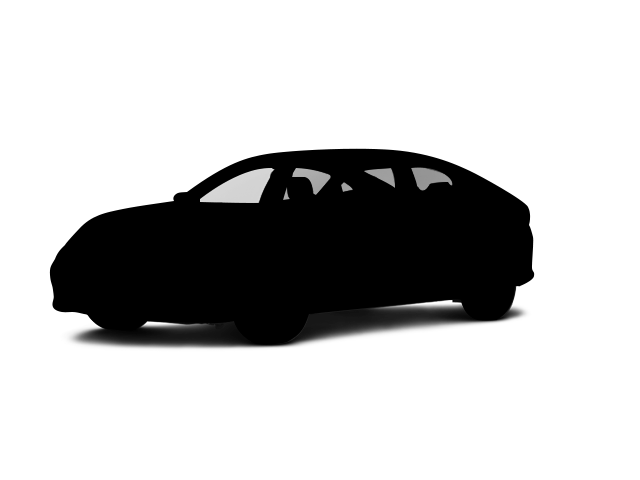Both the ZDX and Corsair have child safety locks to prevent children from opening the rear doors. The ZDX has power child safety locks, allowing the driver to activate and deactivate them from the driver's seat and to know when they're engaged. The Corsair’s child locks have to be individually engaged at each rear door with a manual switch. The driver can’t know the status of the locks without opening the doors and checking them.
In the past twenty years hundreds of infants and young children have died after being left in vehicles, usually by accident. When turning the vehicle off, drivers of the ZDX are reminded to check the back seat if they opened the rear door before starting out. The Corsair doesn’t offer a back seat reminder.
In a Vehicle-to-Vehicle Frontal Crash Prevention 2.0 test conducted by the Insurance Institute for Highway Safety (IIHS), the Acura ZDX achieved a “Good” rating - the highest possible - for its performance in forward collision warning and automatic braking systems, demonstrating its excellent capabilities in preventing collisions. The Lincoln Corsair has not been tested.
Both the ZDX and the Corsair have standard driver and passenger frontal airbags, front side-impact airbags, driver and front passenger knee airbags, side-impact head airbags, height adjustable front shoulder belts, four-wheel antilock brakes, traction control, electronic stability systems to prevent skidding, crash mitigating brakes, daytime running lights, lane departure warning systems, blind spot warning systems, rearview cameras, rear cross-path warning and available around view monitors.
The Acura ZDX weighs 928 to 2367 pounds more than the Lincoln Corsair. The NHTSA advises that heavier vehicles are much safer in collisions than their significantly lighter counterparts.
The National Highway Traffic Safety Administration does 35 MPH front crash tests on new vehicles. In this test, results indicate that the Acura ZDX is safer than the Lincoln Corsair:
|
|
ZDX |
Corsair |
|
|
Driver |
|
| STARS |
5 Stars |
5 Stars |
| Neck Stress |
164 lbs. |
185 lbs. |
| Neck Compression |
18 lbs. |
23 lbs. |
| Leg Forces (l/r) |
140/142 lbs. |
188/315 lbs. |
|
|
Passenger |
|
| STARS |
5 Stars |
5 Stars |
| Neck Injury Risk |
27% |
36.3% |
| Neck Stress |
141 lbs. |
181 lbs. |
| Neck Compression |
36 lbs. |
58 lbs. |
New test not comparable to pre-2011 test results. More stars = Better. Lower test results = Better.
The National Highway Traffic Safety Administration does side impact tests on new vehicles. In this test, which crashes the vehicle into a flat barrier at 38.5 MPH and into a post at 20 MPH, results indicate that the Acura ZDX is safer than the Lincoln Corsair:
|
|
ZDX |
Corsair |
|
|
Front Seat |
|
| STARS |
5 Stars |
5 Stars |
| HIC |
55 |
197 |
| Chest Movement |
.9 inches |
.9 inches |
| Abdominal Force |
164 lbs. |
191 lbs. |
| Hip Force |
163 lbs. |
240 lbs. |
|
|
Rear Seat |
|
| STARS |
5 Stars |
5 Stars |
| HIC |
91 |
97 |
| Spine Acceleration |
35 G’s |
43 G’s |
| Hip Force |
295 lbs. |
816 lbs. |
|
|
Into Pole |
|
| STARS |
5 Stars |
5 Stars |
| Max Damage Depth |
7 inches |
11 inches |
New test not comparable to pre-2011 test results. More stars = Better. Lower test results = Better.
Side impacts caused 23% of all road fatalities in 2018, down from 29% in 2003, when the Insurance Institute for Highway Safety introduced its side barrier test. In order to continue improving vehicle safety, the IIHS has started using a more severe side impact test: 37 MPH (up from 31 MPH), with a 4180-pound barrier (up from 3300 pounds). The results of this newly developed test demonstrates that the Acura ZDX is much safer than the Corsair:
|
|
ZDX |
Corsair |
| Overall Evaluation |
GOOD |
MARGINAL |
| Structure |
GOOD |
ACCEPTABLE |
|
|
Driver Injury Measures |
|
| Head/Neck |
GOOD |
GOOD |
| Head Injury Criterion |
34 |
391 |
| Head Peak Forces |
no contact |
93 G’s |
| Neck Tension |
156 lbs. |
379 lbs. |
| Neck Compression |
0 lbs. |
22 lbs. |
| Torso |
ACCEPTABLE |
MARGINAL |
| Torso Max Deflection |
1.26 in |
1.77 in |
| Torso Deflection Rate |
6 MPH |
8 MPH |
| Pelvis |
GOOD |
MARGINAL |
| Pelvis Force |
602 lbs. |
1160 lbs. |
| Head Protection |
GOOD |
MARGINAL |
|
|
Passenger Injury Measures |
|
| Head/Neck |
GOOD |
GOOD |
| Head Injury Criterion |
85 |
168 |
| Neck Tension |
45 lbs. |
201 lbs. |
| Torso |
GOOD |
ACCEPTABLE |
| Shoulder Deflection |
.51 in |
1.54 in |
| Shoulder Force |
134 lbs. |
379 lbs. |
| Torso Max Deflection |
.71 in |
1.5 in |
| Pelvis |
GOOD |
ACCEPTABLE |
| Pelvis Force |
402 lbs. |
1093 lbs. |
| Head Protection |
GOOD |
GOOD |

